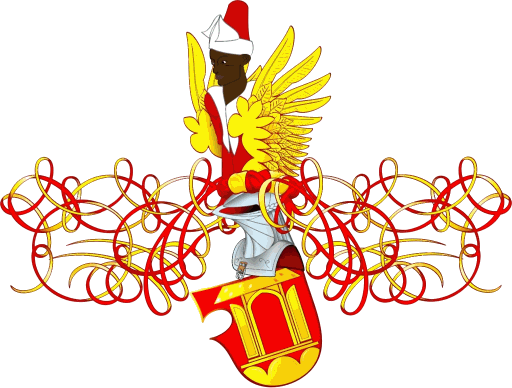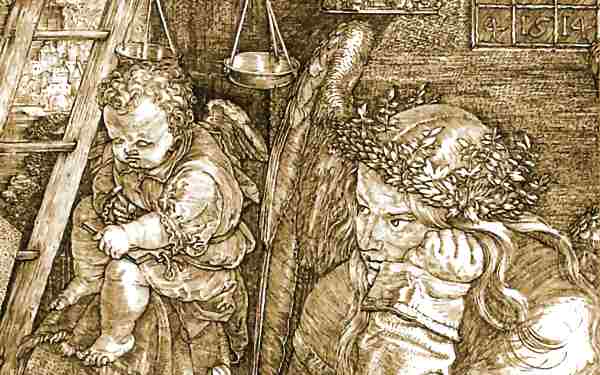Albrecht Dürer (1471-1528)




|
|||||||||||||||||
The arms of the Dürer family (Gules, an open door upon a dreiberg Or) were canting arms: The original German name was Thürer (meaning "doormaker") which had been a playful translation into German of the Hungarian name Ajtósi when the family moved to Nuremberg (in 1455) from the Hungarian village of Ajtós near Gyula (Ajtó means "door" in Hungarian).
Jochen Wilke, who drew the above (copyrighted) rendition, points out that the arms appear in a well-known 1523 woodcut by Dürer himself, whereas the tinctures can be obtained from another lesser-known color picture of his parental arms which Dürer painted in 1490 (on the back of a portrait of his father). Some otherwise reputable heraldists have occasionally used wrong tinctures.
Arguably, Albrecht Dürer was the dominant artist of the Renaissance in Northern Europe (he was a younger contemporary of Leonardo da Vinci, 1452-1519). He also wrote two mathematically oriented treatises (in German):
- Underweysung der Messung mit dem Zirckel und Richtscheyt (1525, second edition posthumously in 1538).
- Vier Bücher von menschlicher proportion (1528).
In 1509, Dürer purchased a large house in Nuremberg (built around 1420) which had been acquired in 1501 by the wealthy astronomer Bernard Walther (1430-1504) who had collaborated with Regiomontanus (a.k.a. Johannes Müller von Königsberg, 1436-1476). Walther had bought all the astronomical instruments of Regiomontanus upon his death and he had transformed the attic into an observatory where they could be used. That made the house particularly attractive to Dürer, who would spend the rest of his life in it.
In 1514, Dürer produced the famous allegorical engraving whose central part is shown above (the title "Melencolia I" appears elsewhere in the composition). This much-debated picture has been construed as a spiritual self-portrait of Dürer (winged and in female garb). It features a despondent chubby angel of genius and several mathematical objects, including a faint cadaveric human figure inside a large octahedron (a truncated triangular deltohedron now dubbed Dürer's solid or Melancholy octahedron). The date of the composition (1514) appears on the bottom line of the magic square reproduced above.
Wikipedia
|
Melencolia I (1514)
|
Dürer-Holper family arms (1490)
|
Dürer coat-of-arms (1523)
Dürer's Polyhedra
by George W. Hart (1997)
|
MacTutor Biography
